By Hazel Appaqaq | 25 minute read
As the precarity of our earthbound existence increases, witnessed by the damage done to the miraculous, living nest of the Earth and the fragility of global systems, the various cataclysmic possibilities resulting in our own annihilation grow steadily clearer. It’s as if our end is slowly gaining substance, every day creeping from the hypothetical into the real, one extinction, climatic anomaly or government-sanctioned atrocity at a time. In the recesses of the collective unconscious, it’s as if our undoing is taking on a symbolic personification, becoming its own entity. This nemesis is fed by all that the current paradigm has suppressed; it grows in solidity the more the masses endeavour to keep a “strong work ethic,” noses to the grindstone, as leaders continue to pour the planet’s resources into the engine of progress, the heads of industries keep stoking the forges of productivity, and the holders of power keep worshipping the deities of materialism and endless growth. This entity which is the image of our own destruction regards us all without distinction, irrespective of whether we chose an enthusiastic role in the systems of our times, were more or less reluctant benefactors, or were the very peoples that the machine brutalized, exploited and exterminated. The stouthearted among us struggle to meet its penetrating gaze.
Where in this lurid picture is there room for a day devoted to love? With February upon us, the 14th square on the calendar can appear to mark nothing more than a sugar-laden convention, another excuse for consumption, a depressing reminder to single people everywhere. More disjointed than ever from our ancestral sources of meaning, the majority of us can relate to some degree to being our own, miniscule island, adrift in a sea of uncertainty. But for those who strive to receive the legacy preserved in ancient systems of knowledge, a sense of order and purpose can be gathered from humanity’s distant past. TCM is one such fortune. Containing layers of refined nourishment, far better than a black forest cake, its wisdom offers a recasting of Valentine’s Day as a celebration of the human heart’s many secrets.
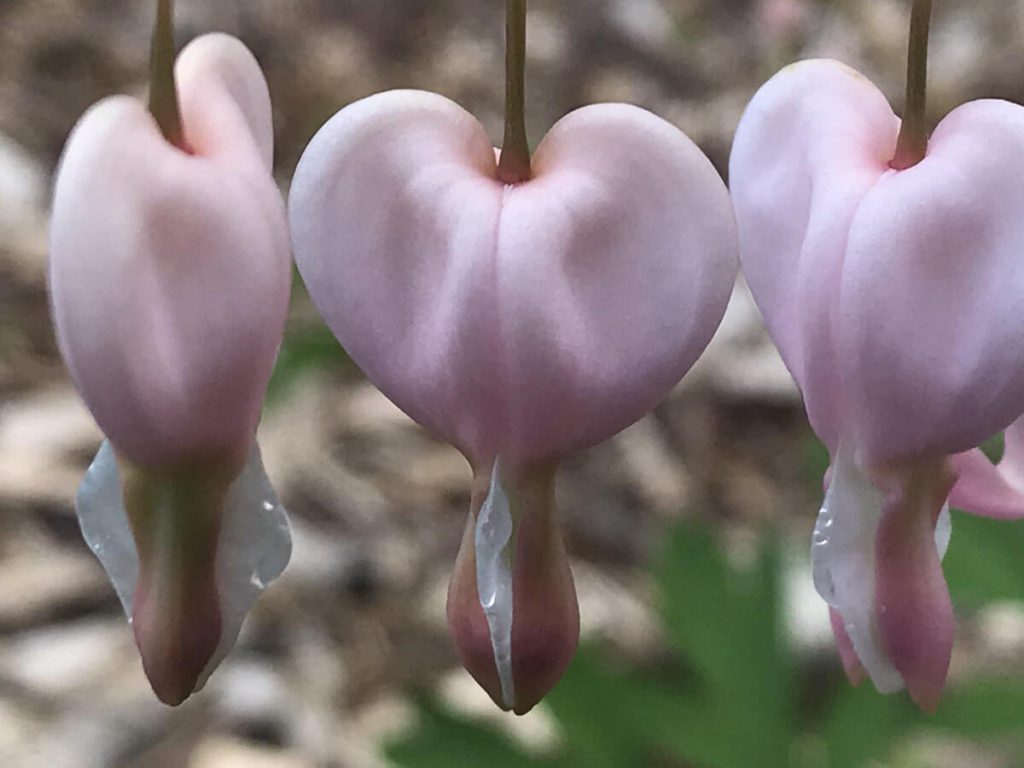
A closer look into this cultural masterpiece reveals that the Five Phase Theory is enhanced by the system of the Twelve Officials. These last are the functional organs. Described by analogy to the ancient Chinese imperial court, the Heart being compared to the emperor, and the other eleven organs referred to as the Heart’s various ministers. Since there are twelve of these officials, including the Heart, one of the elements presides over four organ-officials. Transferred to the sections of the diurnal Chinese clock, this gives us two double-hour slots, and two periods in the year when that element imparts its traits to the season’s passing wave. That special force is Fire, the importance of which indicates that while we are composed of one part each Earth, Metal, Water and Wood, we are endowed with a crucial, double helping of Fire in our being.
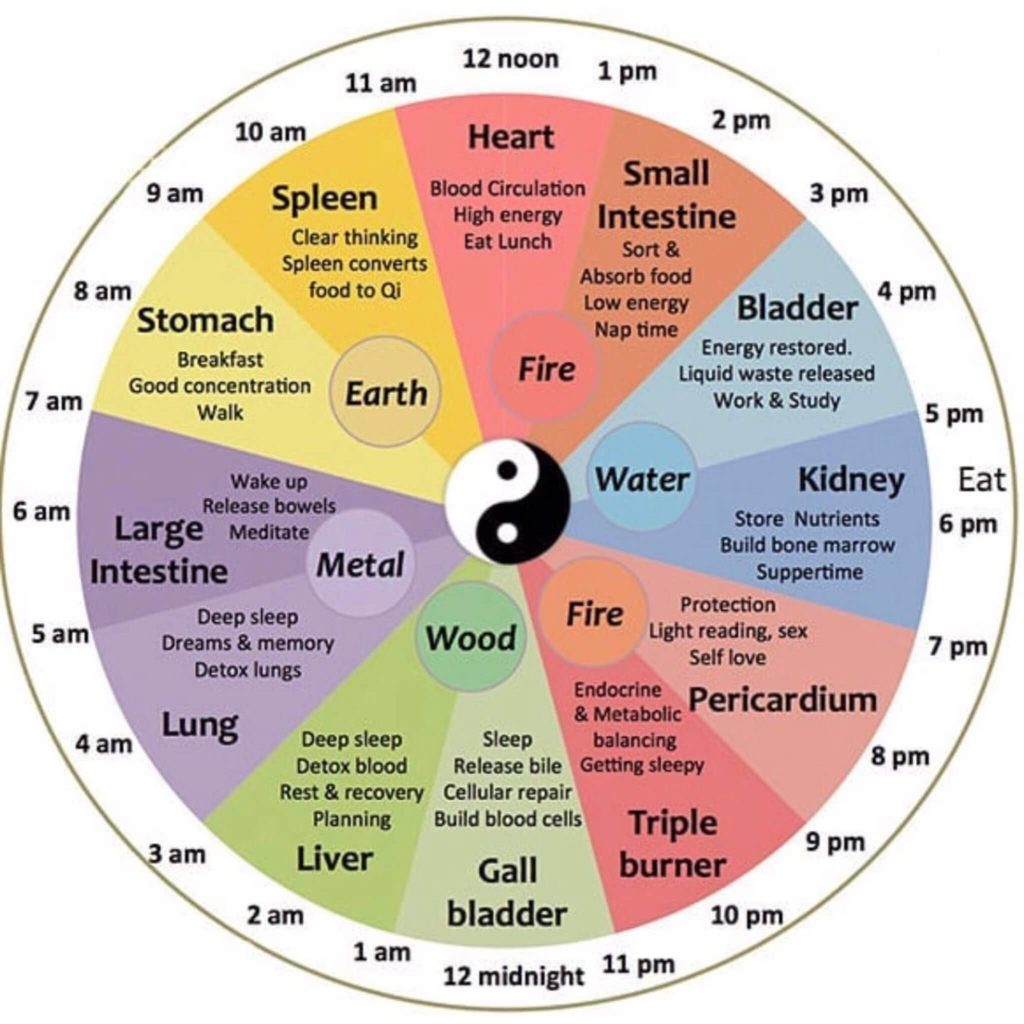
The yearly period when Fire is represented for a second round is late Fall through early Winter, or roughly the months of October and November. At these temporal coordinates, the themes being enacted in nature revolve around the outward brilliance and heat of the climate which is now in the process of cooling and condensing into an interior warmth and light. Further to this, a shedding or stripping of outer layers can be observed occurring in the environment, visibly as well as invisibly. There is of course the shedding of leaves of many plant species, and some trees that have layers of bark peeling off. In our own woodland, we can find neat little piles of refuse, left behind by squirrels that sat and stripped cones of their seed. In the underwater forests of the ocean, seaweeds die back and wash up on the beach. Also at this time, the students and tourists of the island are quickly dispersing to their various off-season situations, leaving empty spaces behind them that receive the community’s mingled sadness and relief. A sentiment that is compared to a fruit that is being peeled, the ancient Chinese associated this time with the emotion of vulnerability. Following the Summertime’s thrust toward extroversion and manifestation, the return of the long-lasting woodstove season pulls us back into ways of being with ourselves and connecting with others that are private and intimate.

The heartfelt tenderness that becomes more accessible at this time is also aligned with the position that the second Fire period occupies on the Chinese clock, which is from 7:00-9:00pm. At this point in the evening, following the Kidney phase, we’re naturally inclined to be preparing little ones for bed, or perhaps slowly heading there ourselves. As the business of the day recedes from the forefront of our awareness, this segment of the day is subtly nudging us into our heart space. Hence, this is also the ideal time when people would normally sit down to a romantic dinner with a significant other. As much as day dates have going for them, the romantic effect of the mid-evening dinner by candlelight is well timed with our natural rhythms for making a heart-to-heart connection. And it is to the tune of romance, intimacy, and relationships that the organ of this season bears the strongest relevance. We are speaking now of the Chinese organ known as the Pericardium.
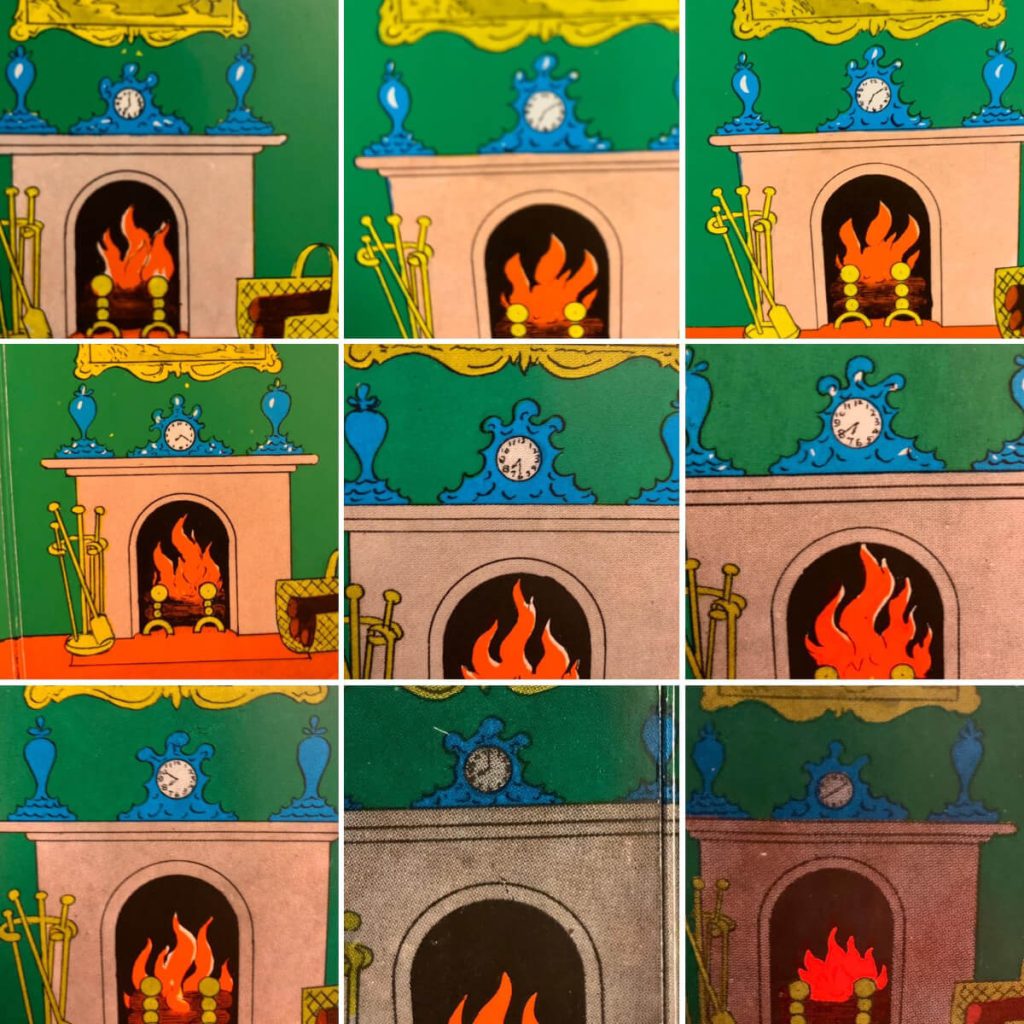
The physical muscle of the heart is enveloped by a liquid-filled sac, consisting of a layer of fluid held in between two membranes. This container protects the heart from external blows, it lubricates the heart’s movement by reducing friction and it also serves as a final barrier against infection from pathogens. These corporeal functions echo the subtler dimensions of the functional organ, which is that aspect of our being that protects us from emotional traumas and the inevitable shocks that we suffer in life. Accordingly, it is also known as the Heart Protector. Since no one can get through life without some sort of education in the school of hard knocks, it makes ample sense that there is an organ whose purpose is devoted to weathering those assaults – regardless of whether they’re “real” or “perceived”. If we’re to have the capacity for settling into a heart-centered presence, we require a sense of relative safety in the emotional and relational realms. In the language of the imperial analogy, the emperor should neither be swayed by the threat of external assaults, nor burdened with the convolutions of internal politics. The Pericardium’s crucial task is the preservation of the calmness and poise that supports the ruler’s inward gaze and the ability to divine the best course of action at any given moment. It is from this unperturbed state that the sovereign is best able to conduct the business of the nation. Like a judge, the monarch must dispense justice and guide the resolution of conflicts in a way that does not incite rebellion amongst the ministers. This is achieved by keeping all of the officials’ best interests at heart – by listening to the essence of their communications, intuiting the elements of their commonality, and strengthening the bonds of their integration. The protection of the Pericardium prevents the sovereign from becoming personally affected by fear: fear of an enemy’s attack or fear of strife from within the realm. By remaining serenely detached, the ruler can look after all with an enlightened governance that is uncorrupted by the biases of owing favours or debts, or from withholding fairness. The central notion here is not of being removed from the people, secluded like a monk in a lofty perch away from the daily functioning of the realm. Rather, the emperor serves as a harmonizing force for the nation, a role which is impeded by the burgeoning chaos and daily frictions of civilization. So it is in each of us: if we are destabilized by internal experiences or overwhelmed by external events, it is hard to know who to trust or who to be wary of, to discern which circumstances warrant vigilance and which allow for a relaxation of defences. The Heart Protector manages such dilemmas involving boundaries by providing a buffer zone to our emotional centre.
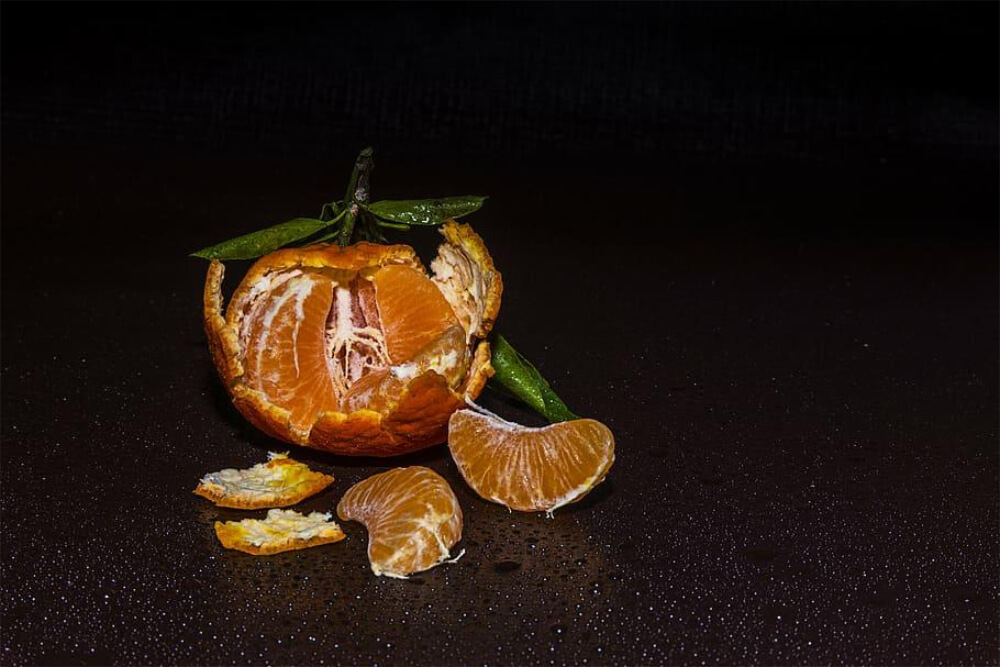
Be that as it may, the balanced functioning of the Pericardium is not to be conceived of as a suit of armour encasing the Heart. Its healthful form resembles instead the porousness of a cell wall. As always, we look to nature’s macrocosmic correlates to inform us of the ideal picture of an organ within us. When the forest surrounding our abodes is being plunged at a quickening pace into the dimness and dampness, and the intensifying chill of early Winter, our modern technological solution is to bundle up and turn up the heat. However, those of us whose primary source of winter warmth is the woodstove are well acquainted with the crisp winter morning’s impish greeting: that begrudged time when we’ve hidden under the covers as long as our schedules permit, and the tense waiting period that follows, in between starting the fire and when its warmth finally fills the living space. As it happens, TCM recommends deliberately maintaining this kind of contact with the climate, so that our human animal unconsciously and intuitively receives the cues coming from our environment. In this community peopled by a majority of eccentrics, we are fortunate to have a variety of examples of the extent to which this advice can be taken.

A few peculiar individuals have been known to go about barefoot for many reasons, one of them being the benefits to internal self regulation that are conferred by being in touch with the ground, even during the frigid months. According to the concept of earthing, our learned approach of enclosing and insulating our feet removes us from an evolutionary mode of communication with the Earth. The idea is that barefooting it, or wearing minimal footwear, reconnects our organism to an important flow of energy, sensation and information to and from the ground. Leaf used to speak at length about how this is conducive to a different way of walking. Instead of striding assertively forward, heels first, the hobbit-like way of padding softly, starting with the balls of the feet, is more careful and receptive, willing to retract or be redirected. Eventually, he would explain, this practice informs a similar way of moving through life. Interestingly, my Inuit father once related his oldest brother’s first experience of wearing settlers’ snow boots. Compared to the soft, seal skin boots that were common in the pre-colonial, southern Nunavut culture, my uncle said that the white man’s boots left his feet feeling like “dead fish in a box”! His feet felt deadened from being made to take the shape of the boot, and from being severed from contact with the terrain, instead of the other way round: having the boots literally be a transitional, second skin.
Wim Hof enthusiasts boast the health-enriching effects of thermal conditioning, which can be done by gradual submersion in cold water. In the Chinese medicine perspective, sitting still in cold water for long periods is said to be too intense for the overtly Yin nature of women’s systems, however the essence of thermal conditioning can be adapted by simply allowing oneself to be chilly more of the time. At least one year-round islander models wintertime lake swimming in a wetsuit. Even the hurried trek to the woodshed provides a measure of the cold’s medicinal bite, which is missing from the metropolitan’s trip from warm apartment, to heated transit, to air-conditioned workplace. Wim boldly asserts that we can uncover a robust and resilient wellness by interacting with our home landscape like animals. By this he means periodically communing with our surroundings in the technical garment that we were given by our mothers.
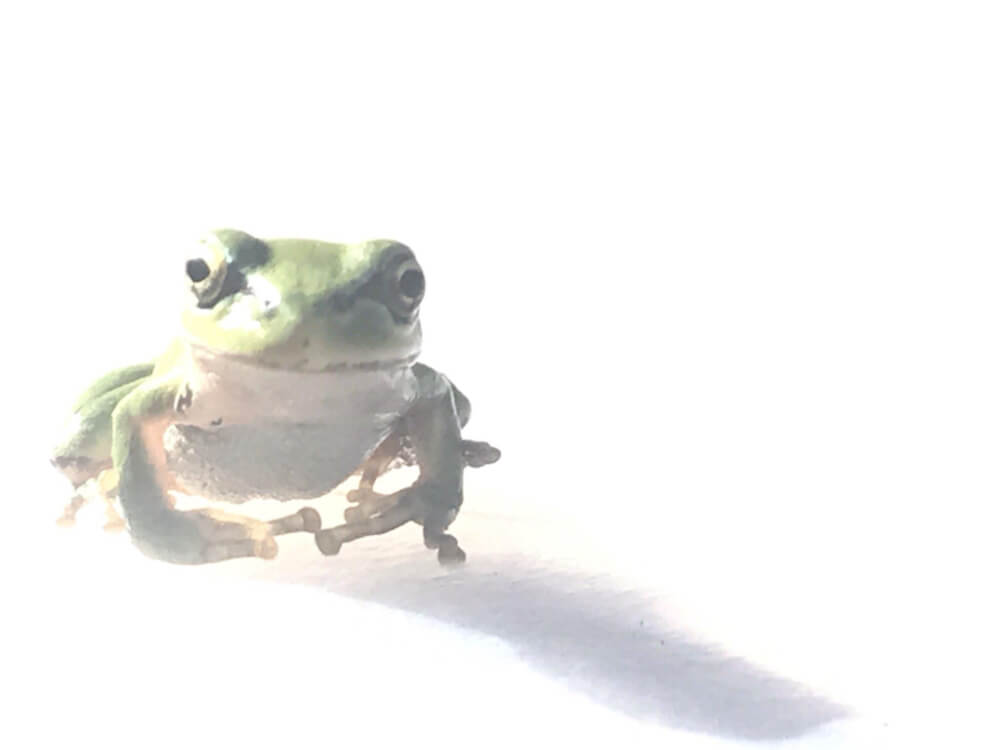
In these examples, the cultivation of a stable, toasty core contained by a cool, outer layer promotes a personal integration with our surroundings that reflects the energetic composition of the forest in Winter. As was described in the Heart article, in whichever season we find ourselves, the rule of thumb is to let our skin match the qualities of the outdoor environment. In the Summer, that meant venting excess heat from the core, by gently pushing it out through the skin so that it can escape and dissipate, resulting in a relatively warm surface, and a relatively cool center. In the Winter, that dynamic is reversed. The interesting thing is, to accomplish that, we need to feel the cold. What TCM, the Wim Hof method and the practice of earthing convey are the importance of not cutting ourselves off from the uncomfortable conditions of the seasons, but to cultivate an internal regulation via our body’s innate responsiveness to sensation. And, like the fuller implications of earthing, this moderated merging of inside and outside finds a further relevance in our private lives. Remember the Lungs’ role of channelling integrity by blending the qualities of strength and suppleness. And recall the Spleen’s service of channelling reciprocity in a dance between receiving and giving back. Likewise, the Heart Protector mediates between our equally vital needs for security and vulnerability, along a continuum that promotes the creation of safe intimacy. The function of all of the organs plays out along similar spectrums of expression, continuously striving for balance via a critical, dynamic tension between opposites.

The Pericardium’s role of protecting the Heart tends to be overexercised in our modern world, where the frequency of shocking events and a constant state of overload threaten to keep our systems continually off kilter. From the degradation of landscapes, to political divisiveness that propels nightmarish merry-go-rounds of conflict, to the difficulties that we face in finding human connection, the need to brace ourselves psychologically and emotionally comes up so much that the Pericardium tends to suffers an imbalance between its roles, and is like a muscle that is continually signalled to clench and tighten, and clench some more. As any yogin or yogini can attest, for a muscle that is persistently told to do something, receiving the instruction to do nothing feels difficult. Having become highly attuned to the task of self preservation, the Pericardium’s other charge, the act of opening, is confusing. Look back on your story and recall a time when you were shut down, socially withdrawn or were holding your cards close to your chest. When out of balance, the Pericardium can confuse us into believing that the right course of action is to play it safe, to retreat from our relationships in order to guard against being hurt. When performing appropriately, this official acts as a wise adviser, identifying the person who does not demonstrate enough concern for our heart, or who is perhaps not able to do so. But when the adviser is overly cautious, a lingering guardedness impedes the healthy activity of our emotional core. Have you ever felt incapable of feeling joy or lightheartedness, or of simply being at ease in a social setting? Perhaps you’ve never really had any lasting, close connections because you were loath to bear the inherent risks in being vulnerable. Alternatively, someone who has taken the chance and been burned by the failure of a relationship might sustain the perception of rejection or betrayal in the long term, not knowing how to open up again without a sense of jadedness. These are all signs of an overbearing Heart Protector fulfilling its responsibility all too well: of convincing us to stay detached, or simply avoiding our emotional life altogether. We can become inadvertently accustomed to staying below life’s radar, declining the daily opportunities to become engaged participants in our own story. Little do those suffering from this imbalance know, safeguarding our inner sanctum is actually meant to be this official’s secondary role. The bipolar spectrum of function mentioned above manifests in the Pericardium due in part to its other role: of allowing a person or experience to touch us directly. The double-sided nature of the Pericardium is that it’s both the chief of security that stands guard over the wise king or queen within, and also the door that opens to one’s innermost chambers of connection. Through this primary function lies the Pericardium’s gift, which is the liberation of a delicate power.
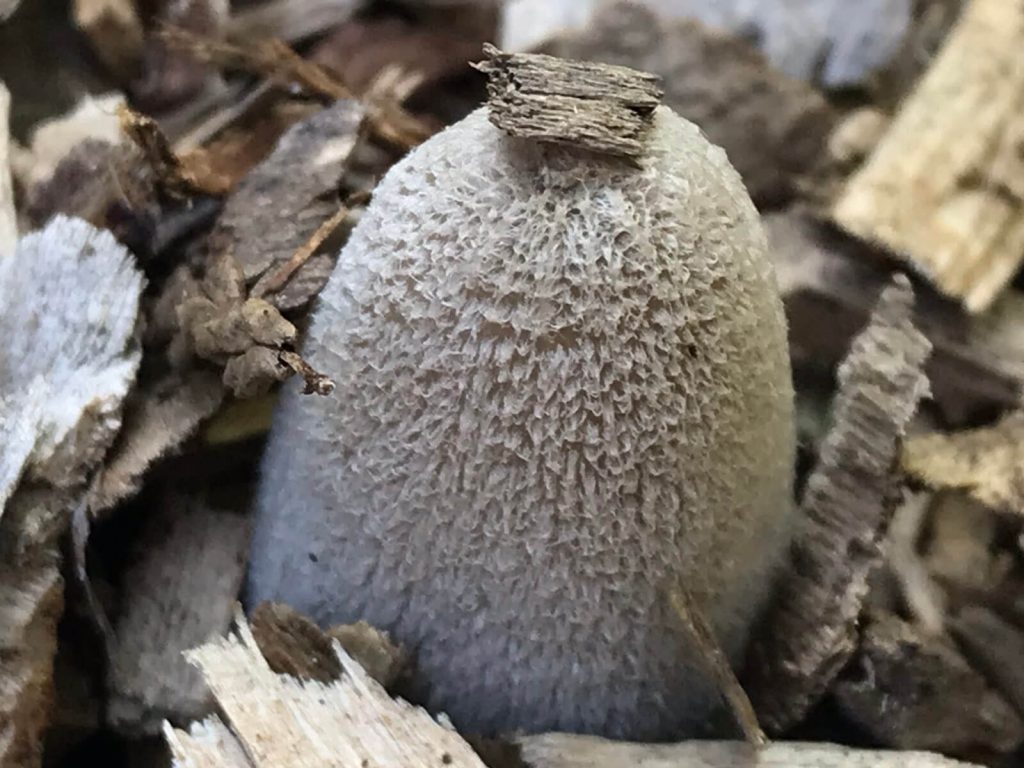
This fragile power brings us to a third name that the Pericardium/Heart Protector goes by, referred to in some translations as Circulation/Sex. In congruence with its physical structure and energetic profile, the Pericardium’s presence influences our social and sexual lives, in which it serves as a womb-like container that contains and nurtures our capacity for intimacy. Together with the Liver, the Spleen and the Heart, the Pericardium’s role is borne on the tides of the blood. When venturing into the grounds of another’s inner palace or inviting someone into ours in the dance of sexual attraction, the Pericardium is involved with the chemical and hormonal transformations that come over us via the blood. In the language of allopathy, specific hormones are identified that course through us when we’re practising embodied self-care, such as in a yoga routine or cuddling with another human or animal, and of course those hormones that get “turned on” when we are! In TCM, the role of this official is to provide us with an embodied sense of closeness. This closest official to the Heart creates a visceral longing in us that propels us to seek out the experience of otherness – the pleasure of companionship, relationship and sexual expression, without which we can feel as though we’re functioning in a state of social or sexual deficiency. Such is the sociability of our nature that if we go without feeding it, it can feel akin to a gnawing hunger for an essential nutrient. Actually, this was a hot topic of discussion during the early days of lockdown and the social restrictions of last year. The many ways by which we connect in person were sorely missed by all, including meeting another’s gaze directly instead of through a screen and sharing food and touch. We suffered the loss of communal activities such as yearly celebrations, concerts, focus groups and fitness classes, as well as the freedom to make music, dance or simply pass the time together. It made us more cognisant of the complex and instantaneous ways in which we engage in person, by sensing and responding to other humans’ physical and energetic presence. Clearly, the full-body experience of closeness occurs in different social settings and through various degrees of connection. The Pericardium’s task encompasses all of these. When in balance, this official is playing its part well when we feel attuned with ourselves, in touch with a trusted friend, or are feeling safe and comfortable in the mutual exchange of an intimate encounter. Yet it is through this last, in the alchemy of romantic fusion, that its presence is particularly relevant. Here the opportunity exists to transcend the boundaries of selfhood, and experience the mysterious dissolution of the two into one. It is in this instance that the door to the inner palace becomes a portal that enables the sovereign to attain full power and effectiveness. In this way, the Pericardium is as much the Heart Opener as the Heart Protector, whose ultimate gift to the emperor is the capacity to feel in communion and at one with all of existence. The melding and merging that happens in true intimacy primes our hearts for the feeling of wholeness within ourselves and a sense of belonging in the world. Curiously, the important skills that allow us to identify safe, trustworthy people and appropriate circumstances for being vulnerable eventually open us up to our capacity for becoming receptive to every moment, every situation, for recognizing the self reflected in every other self, as well as falling in love with our own heart.
When is the door to our heart “Out of Order”? It can be rusted shut or stuck open; both conditions are equally hazardous. Have you ever observed rashness or naivete in yourself in the initial stages of meeting or dating someone? Maybe it’s only with hindsight that you notice a pressurized need to recount your story, complete with a synopsis of traumas, missteps and heartbreaks. Maybe you know someone who, at first glance, fits the profile of one who wears her heart on her sleeve, yet after a time it becomes clear that sensitive information pours out of her involuntarily. This kind of overly porous vessel displays the habitual behaviour of laying it all out at the feet of the potential friend or partner, or any captive audience of the moment. Perhaps there’s a person in your social sphere who can walk into a room full of strangers and turn the spout on to full flow, yet lacks awareness of those on the receiving end of his monologue. On the other hand, someone you know might evidence the same imbalance of openness, yet has a poor sense of his ability to receive such a deluge of information. This one struggles with knowing and enforcing his comfortable limits in connection and as a result, has trouble voicing his needs and boundaries and generally advocating for himself. Maybe you yourself are known to be a genuinely big-hearted person with a sympathetic ear, yet you often wind up feeling like a garbage receptacle for other people’s venting habits. If these types of people engage in their characteristic, unconscious ways, a false sense of intimacy can ensue at a breakneck speed, which leaves them exhausted by the intensity and unregulated onslaught of connection. Any quality of desperation in one’s search for love indicates a Heart Protector that is yielding access too easily. Codependency and an inability to leave a toxic or abusive situation would very much apply to this pattern.
A similar type of Pericardial dysregulation exists in the outward orientation promoted by mainstream society. One example can be found in the world of online dating. Many dating services design their sites in ways that brazenly prey upon the widespread isolation that is a paradoxical symptom of our times. They teach people to market themselves and shop for others by the superficial details of their bodies, stories, and dispositions. Of course, to a large extent, our personality is shaped by what we’ve experienced and been exposed to. However, by learning to engage with ourselves and others in a way that is defined by our habits and routines, often focused on aesthetics, and influenced by gender roles and other arbitrary standards, we are being conditioned to see through many layers of lenses of the materialist, consumerist model. The users of this breed of apps are being subliminally, yet overtly manipulated by the assumptions of the dominant paradigm, not least of which is the refrain that gets hammered home to us time and again, to seek outside ourselves for that which will fix what’s wrong or missing on the inside. For example, in some dating apps, the days around Christmas and New Year’s get special ads that trumpet them as holding the highest traffic levels, as though that were an enticing cue to jump on the bandwagon, and not the depressing image that it is of lonely people fixated on their phones over the holidays. The mainstream motto, based on the precept of searching for something or someone to complete us from without, leads to the convention of the hookup culture, in which the Pericardium’s gift is known largely as an adrenaline rush, reducing it to a chemically induced high. Love itself is defined in terms of hormonal attraction, subject to its own boom and bust cycle, a way of relating which encourages forging headlong into romantic entanglements, and out again, falling in and out of infatuation or various shades of love repeatedly. This kind of passion, which can be termed as hyper-sexual, is very hot on the surface, yet limited in a grounding, substantive basis. Like a fire that is fed all the cedar and air it can consume, it blazes brightly, but is very hard to sustain. Energetically, this is the mirror image of the energetic associations for the Heart Protector, and is in fact the picture of the Springtime, and the energetic profile for the Stomach, which is known as the clock pair to the Pericardium, or the organ situated on the opposite side of the Chinese clock. The flourishing energy of the Spring does have its place, and is beneficial for serving our needs to grow, branch out, build and develop ourselves. However, wielding the power of intimacy in this way causes something like scar tissue to develop in the Heart Protector, which blocks the ability of the door to open fully and allow us that transcendent experience of love. The abuse of this delicate power’s hormonal ingress constitutes a common disease pattern. All addictive behaviours, whether it be of drugs, food, shopping or sex, relate back to an imbalance of the Stomach official. In the same way that plants need the right balance of nutrients, enough warmth, and their accustomed length of time to reach maturity before setting fruit and forming seeds, we also need quality connection, privacy, and ample time to let our close relationships mature at an organic pace.
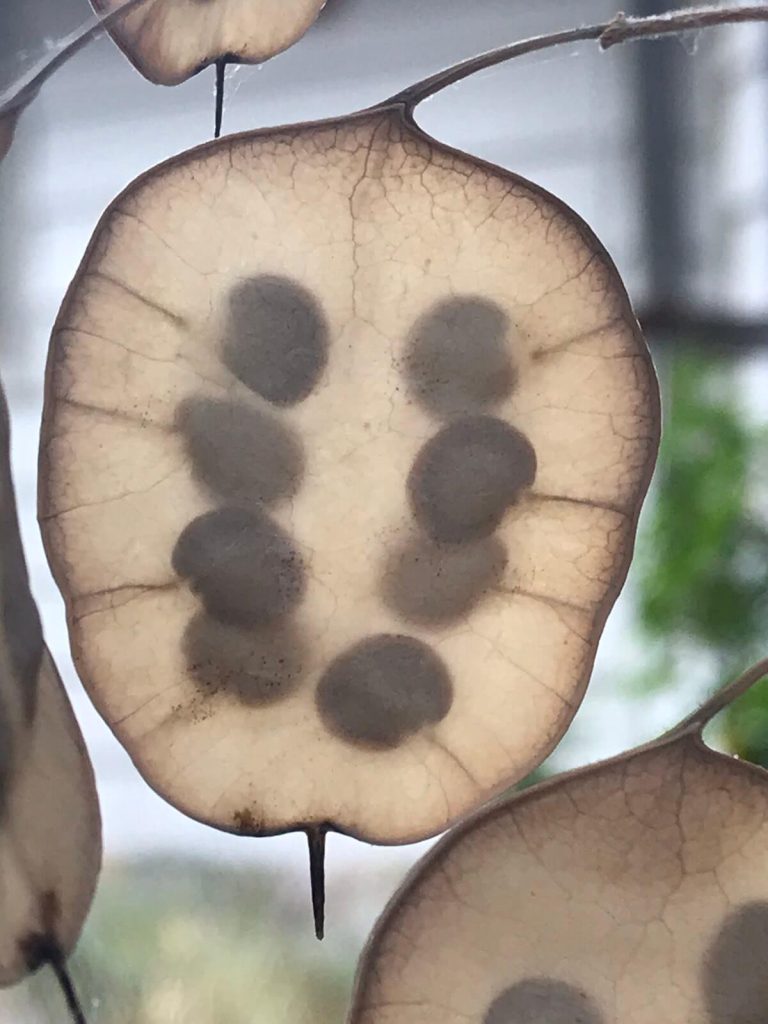
The inverse of this imbalance, in which someone displays emotional or sexual frigidity, points to a deficiency of the Fire element. As opposed to the person who feels compelled to give his or her heart away at any cost, there is another who displays an emotional coldness in social or romantic entanglements, a condition that allows the severing of a connection with little concern for the other’s wellbeing. Relevant questions for this dynamic would include the following. Have you ever broken someone else’s heart? Have you withheld warmth or affection in an attempt to regain control in a relationship? Perhaps you’ve simply found it very difficult to be fully present in any intimate encounter. Or, having never had the chance to bare their heart to another, some people harbour the limiting belief that they will never love. One might ask, if the highest expression of the Pericardium’s function is a full-being experience of oneness, why should we not just prop the door open and be done with it, or at least keep it ajar? For one thing, this kind of rationalization is ignorant of an honest acknowledgment of whatever developmental stage we’re currently at, and furthermore, we can’t expect others to have the same relational settings as us. “Acting as if” a certain level of safety exists with an acquaintance might be a beneficial exercise for the person who is reticent towards forging new bonds. But as an unquestioned habitual demeanor, it can create volatile misunderstandings of what the would-be outgoing person is actually feeling, and can lead to potentially traumatic conflicts. There is an important skill which involves the honest sensing of one’s own, present need for boundaries and desire for closeness, while at the same time sensing another’s momentary availability. This can be called, “meeting equally,” a term that was introduced at a workshop held on Cortes a few years ago, entitled “Being Held”. Developed and led by a couple on the big island, the workshop was a day-long program of exercises focused on touch, pure and simple – not relating to massage or any other physical or energy therapy. The day was begun by a discussion of all the possible meanings of the word, “safety,” with which the workshop participants managed to fill two large posters. The rest of the workshop consisted of exercises, enacted in dyads and small groups, which focused on different aspects of sharing safe touch. It was a transformative experience that demonstrated several ways in which we can recognise situations that feed our Fire.
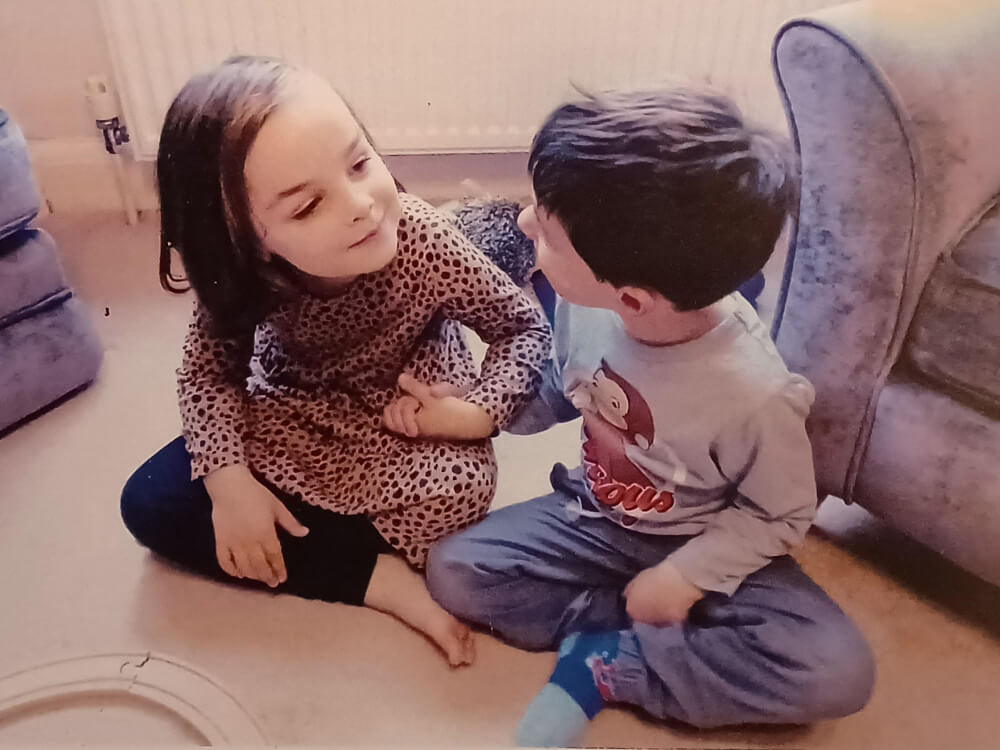
Another pattern of Pericardial dysfunction is known, where the door to the Heart is impulsively flung open, then later snaps closed in a knee-jerk fashion. Do you have a friend who has been known to rush off in pursuit of the attractive vision of another, but then once a connection has been made, suddenly feels exposed, and tends to retreat back to the safe confines of isolation? It’s as if he routinely races out of the gate of his kingdom, is struck by some kind of fear or uncertainty, which invariably causes him to turn tail and beat a hasty retreat, as the door slams shut behind him with finality. In this case the door might not be permanently stuck in either position, but the opening and closing happens in a disordered, reactionary manner. Often, the confusion around safety results from a past hurt having been sealed off within the Heart, and being set free at the moment of intimacy. In fact, this is an attempt by the Heart to “clean house” and void itself of the old wound – a healthy impulse. When the door opens, the past trauma is released at the same time that the present experience of connection is received: they pass each other, and share a fleeting instant at the threshold of the Heart. This interaction can be mistakenly interpreted as the present circumstance suddenly being found to be unsafe, as if it constituted a reprisal of the old pain. If the interpretation is not examined, especially if this happens repeatedly, the health of the Pericardium can become compromised by the outlook that is generated, and apparently confirmed, that “intimacy is not safe”. In TCM we find the intriguing insight that the unscrutinized interpretations of our life experiences can eventually manifest as illness. Thus, in our essays toward the creation of health, in addition to shifting the patterns behind our physical symptoms, it’s equally important to take stock of our habitual emotional states, as well as the themes of our commonly inhabited headspaces.
Whether our unspoken motto in relating is “trust first and ask questions later,” or “safety in numbness,” it’s entirely possible for us to sense the right moment to reveal our inner sanctum, and accept the invitation into another’s. For the person who’s a self-proclaimed open book, and the one who values deep listening, the possibility exists of exercising flexible parameters, while remaining responsive to our social creature’s innate ability to read the atmosphere. Clearly, the hinges of the door to our heart must stay well oiled, and the kingdom’s inhabitant must also retain a present-time ability to choose – an inner knowing of when to let the door open and close appropriately, depending on the continuous ebb and flow of inner and outer circumstances. Part of this skillfulness is the practice of compassion, especially needed in times when the Heart Protector’s mechanism is malfunctioning. Even if the movement of the door to our Heart has gone awry, its motions can also be seen as an understandable stage to experience and learn from, part of the process of coming back in touch with intentional relating. Mysteriously, the wild vacillations we experience in our flirtation with extremes are also a part of our embodiment of a greater, dynamic equilibrium.
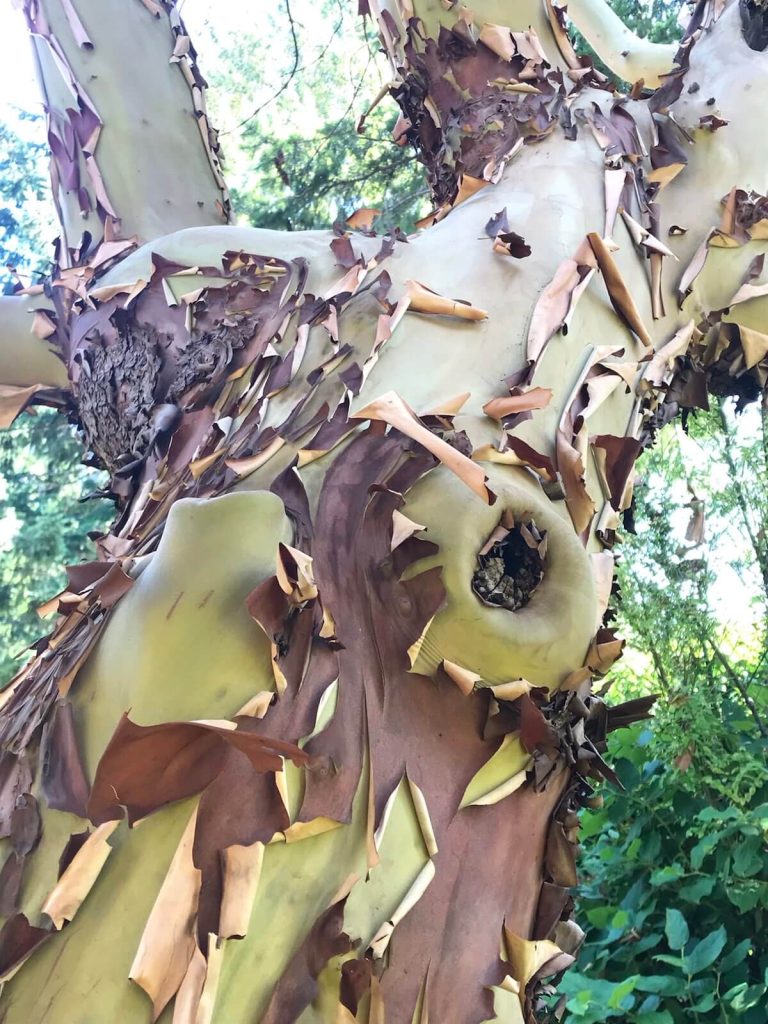
Nature’s demonstration gives us a template for our thermal and energetic integration with our environment, which, when translated to our social and sexual lives, informs us of being outwardly cool or reserved, while fostering a contained, inner affection. Like the feeling of being tucked into bed at night, and the moment when the mind finally ceases its grasping actions and begins drawing in on itself, the Pericardium’s keynote feeling is coming inside. This ability to shelter a concentrated form of passion rests on the essential emptiness and stillness of the Heart itself.
Recall that the Heart conducts the activities of all the other organs, combining with the Lungs to guide the many oscillating functions into a harmonious rhythm. The Heart has little other task than maintaining this overall order, which can be summed up as keeping the beat. Its role as the conductor of the orchestra is closely related to its design as being a home for the Shen, the human capacity for conscious awareness, otherwise translated as the force of unification in our being. Yet any committed drummer knows this truth: that underlying all music and all beats is an essential silence, which makes the music. Likewise, in the immeasurable space and ground of our awareness, the invisible environment that receives the information coming in through the senses, which notices all the passing thoughts, registers our emotions, and generates appropriate responses to it all, resides on a foundation of tranquillity. Lao Tzu found many ways to describe this truth in the Dao De Jing. He pointed out the similarities of wheels, bowls and rooms, which derive their usefulness from the central holes and emptiness which they enclose. Resembling the physical chamber of the anatomical heart which channels a flow of blood, the functional Heart thrives on a quality of awareness that is receptive and responsive, yet unattached to any of the content which it illuminates. The Heart does not have the same acquired emotions as the other primary organs, although it has been roughly translated as corresponding with joy. However, contentment would be a better translation, in the sense that its highest attribute is of being a vessel for the consciousness that shines outward like an internal sun, yet remains unattached and unaffected by the matter of daily, physical reality. The stillness and hush that settles onto the forest in early Winter, especially tangible in the quiet after the first snow, is reminiscent of the Heart’s container that serves as a setting for the totality of our experiences.

Despite the developments that civilization at large has undergone over the past 3 millennia (since the supposed beginnings of Chinese Medicine), our modern-day lives find reflection in the patterns spelled out by the ancients of a far distant land. If this does not speak to us of our inherent likeness and commonalities with each other, it is a source of perplexity as to what indeed would. With every passing year, across all categories of separation – as individuals, families, communities, nations, and as a global race, we are pressed more closely with this very question: if our similarities with each other as a species and our kinship with all life do not reach across all levels of human-conceived divisions, is it only the approach of our mass extinguishment that would spur us to attain that understanding, along with the necessary shifts in our collective existence? As it ever was, change is the only constant, yet somehow, during civilization’s adolescence, the average modern-day human has become bad at change. An oft repeated prelude these days is: “When things get back to normal…” Yet the slower we are to make an ally out of change, and of our past errors, the more we are at risk of repeating them, or becoming a cautionary tale ourselves. Where better to find the lessons of the past than in one of the world’s oldest agrarian cultures, one that offers a vast legacy of nature-based knowledge and insight into the human condition? Notwithstanding TCM’s scientific intricacy as a health system, it retains an essential simplicity and a spiritual relevance. Sharing a country and era of origin with Daoism, it incorporates many similar values of its sibling spirituality, such as living in harmony with nature, going with the flow, and cultivating compassion. As such, Chinese Medicine centres on a core of wisdom that is extremely applicable to a global society that tips ever closer to the brink of collapse.
In this tradition, the Heart is known as the emperor, the ruler seated at the centre of the kingdom, who makes all of the decisions, and maintains order among the ministers. This analogy teaches us that each person is a whole, self-contained kingdom. Instead of implying that the Heart’s power comes from being a dictator, its efficacy to rule unfolds organically from its virtues as a unifier. Describing the role of the Heart in this way alludes to its role as being the vessel of the Shen: the harmonizing, organizing, unifying force in our human design. Alternative and antecedent to the medical establishment’s approach of separating the psychological from the biological, TCM includes, and even prioritizes, addressing our nature as conscious beings. Note the difference between this connotation and the depiction of selfhood as a disparate entity that temporarily inhabits our bodies. Rather, it resembles a vibration that animates our matter, from head to toe, that also resonates with all of creation. The implications are of a personal relationship with the Dao, and also the importance of honouring the felt sense – of living embodied lives, and inhabiting the sacred space of our hearts.
When exploring any culturally far removed tradition it is important not simply to dissect, reduce, or translate its terms into familiar equivalents. That route forces the unfamiliar body of knowledge into a mould which it does not actually fit. The manifold meaning of Shen, which defines humankind as a potential force of harmonization, is an example of a term that not only imparts knowledge, but would traditionally serve as a vehicle of transmission, intimating the spirit of TCM. In this indigenous, experiential worldview, humanity occupies a position between Heaven and Earth, the bipolar opposites of the world without, and the kingdom within. Part of fulfilling our heavenly mandate is our task to balance and unify the cacophony of forces coursing through us, and thereby contribute to a unison of humanity with the cosmos. While the realization of this heavenly decree can unfold over a lifetime, it can also be enacted to some degree whether we’re here for a long time yet, or just a short while. As such, the fulfillment of destiny parallels a deeper meaning of commitment, one that applies to our close, intimate relationships, and can ripple out into any other. Instead of a word that is synonymous with loyalty, implying conformity to an outward standard which dictates our actions and internal processes, an internal constancy can emerge through the portal of the heart, expressed outwardly as the choice to show up continually as best we can to the work of our life path. Counterpointing the fear inspiring image of our end, the Pericardium presents the possibility of opening to action and interaction from a position of strength and letting go of outcomes, as if we were imitating the rising and falling movement of a bellows, or the spokes of a great, cosmic wheel. The sovereign ruler symbolizes this challenge: that we remain engaged authors of our story even as every one of our accomplishments will one day be reduced to dust. Can we remain present and responsive yet unattached, available to receiving love and loving while being at peace with the transitory nature of relationships? The reality of our worlds coming down around us does not alter the essence of the heavenly mandate, as each moment is ever dying to the next in our temporary personification of roles, unfolding across the ageless face of the Earth.

Special thanks to my editor (a.k.a. my mum) for helping me to find just the right words.

